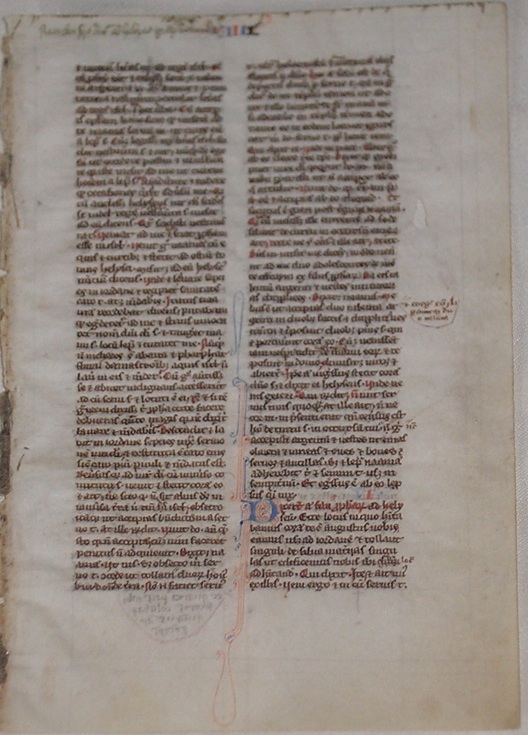
Latin Manuscripts
The Latin Vulgate
The Latin Vulgate is the version of the entire Bible in the Latin version, made by Jerome at the end of the 4th century; the New Testament in 383 -384 A.D. and the Old Testament in 390-405 A.D.
The Vulgate was the Bible of Western Europe and North Africa, and was the source of many other translation down to the time of the Reformation. It was introduced into England about 596 A.D. by the monk-missionary, Augustine, and his 40 companions. Then it went to Ireland, France, Switzerland, and Germany. In 1228 A.D. Stephen Langdon, afterwards Archbishop of Canterbury, divided the Bible into chapters. In the 13th century, several revisions and lists of corrections were made. In 1450 A.D., the printing press was invented and the first book printed from a movable type press was the Latin Vulgate in 1455 A.D.
This beautiful manuscript is hand written in dark brown ink on fine vellum and rubricated in red and blue. This manuscript was produced in one of the flourishing Scriptoriums in Paris and is dated circa 1250 A.D.
Books of Hours were personal prayerbooks of devout and status-conscious people. Of all the manuscripts that survive from the the later Middle ages and the Renaissance period, the Books of Hours form the largest category. To own a copy of the Scriptures in this tine period was considered illegal by the church. The contents of the books were derived from official service books of the church but were produced as a personal prayerbook for the laity. Thus, they were not subject to priestly control and could be as beautiful and costly as their owners personal wealth could purchase. No two were alike. They were hand written on vellum and were illustrated in reds and blues and enhanced with gold (gilded). This particular leaf from a Book of Hours was written circa 1470 A.D.
Book of Hours - circa 1470 A.D.



Latin Vulgate - c 1250 A.D.